If you’re looking for a new bike for your son or daughter, then you’re going to want to make sure you get the best bike for them (and your wallet). There are a bewildering array of bikes out there – balance bikes, pedal bikes, BMX, mountain bikes, hybrids, road bikes, cyclo-cross bikes. It’s important that you buy a bike suitable for your kid’s age, and the type of cycling they are doing (NOTE – this may be a different bike to the one they want!!)
Here’s a run down of the types of bikes available, which will hopefully help you decide which type is correct for your child. Starting at the smaller end of the range, we work our way through the sizes up to the specialist larger bikes.
There are a lot of other factors to consider when buying a bike, including weight, build quality, components and price – for further advice on these aspects check out our other page on everything to do with buying a kids bike
What’s the best bike for my child?
Balance Bikes vs Stabiliser bikes
At the smallest end of the range you have balance bikes (which come without pedals) and are designed for children aged 2 and over.
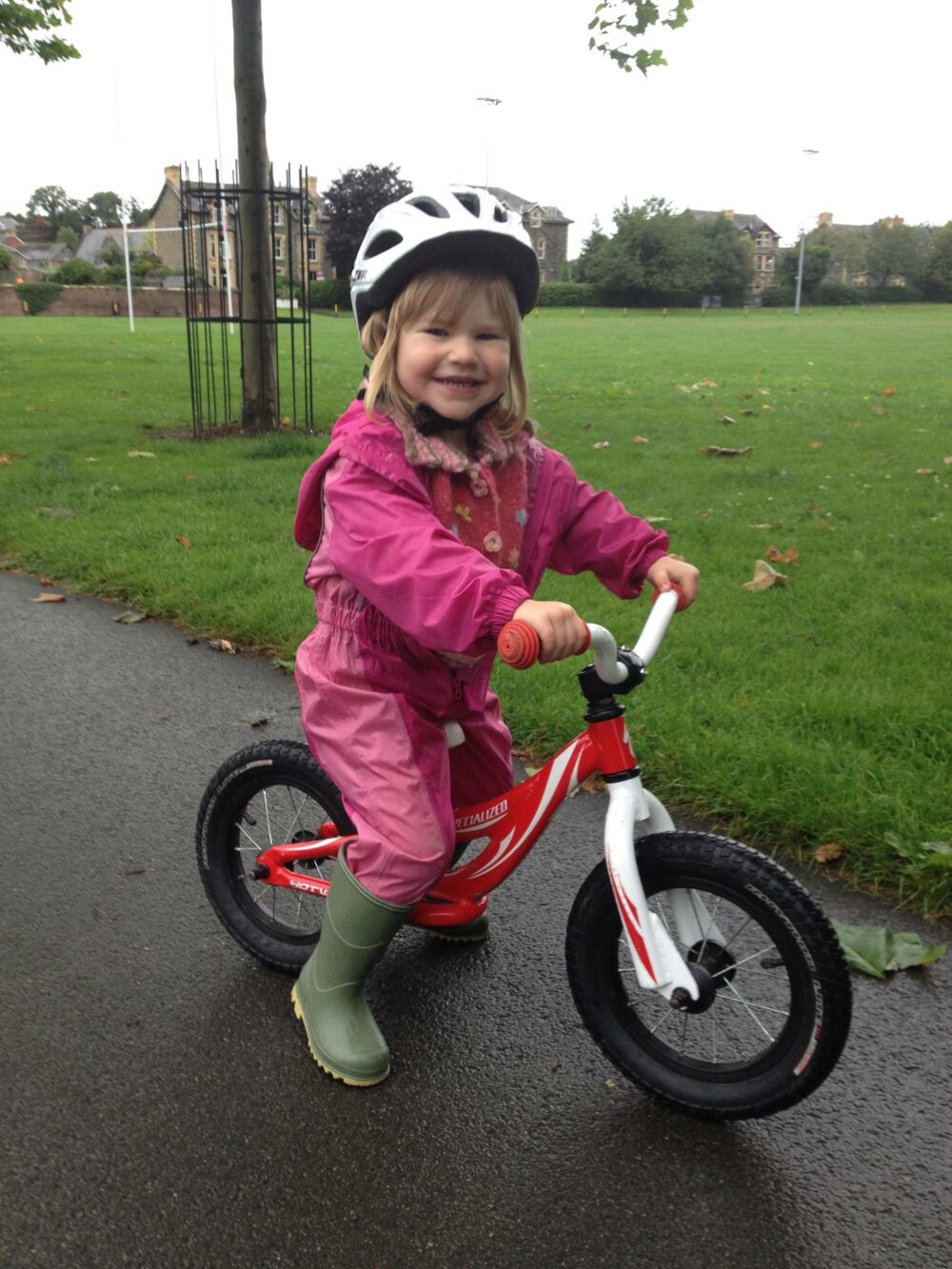
Balance bikes are taking over from stabilisers as the way to teach your child to ride a bike. Here at Cycle Sprog we recommend balance bikes over using stabilisers, as your child will learn balance and bike control a lot quicker. You can save money by removing the pedals and cranks from a regular 12″, 14″ or 16″ bike, but a specifically built balance bike may have additional design features to help your child get mobile.
For more information on balance bikes see our more detailed articles:
- Balance bikes – the Cycle Sprog guide
- What is a balance bike?
- Choosing the best balance bike for your child
- 9 things to consider when buying a balance bike for your child
- Stablisers or balance bike? Why one family used both
- The best bike for a 1 year old toddler
- The best 12″ wheel first pedal bikes for ages 2 years and over
First pedal bikes
When your child starts to pedal, you need to keep things nice and simple. Avoiding suspension, gears and drop handlebars is the key to getting them confident on two wheels. Most kids pedal bikes with 14″, 16″ and 18″ wheels are single speed (i.e. no gears) for this very reason. Unless your child is a very proficient cyclist that is specialising in a particular discipline very early, just keep it simple and lightweight at this age.
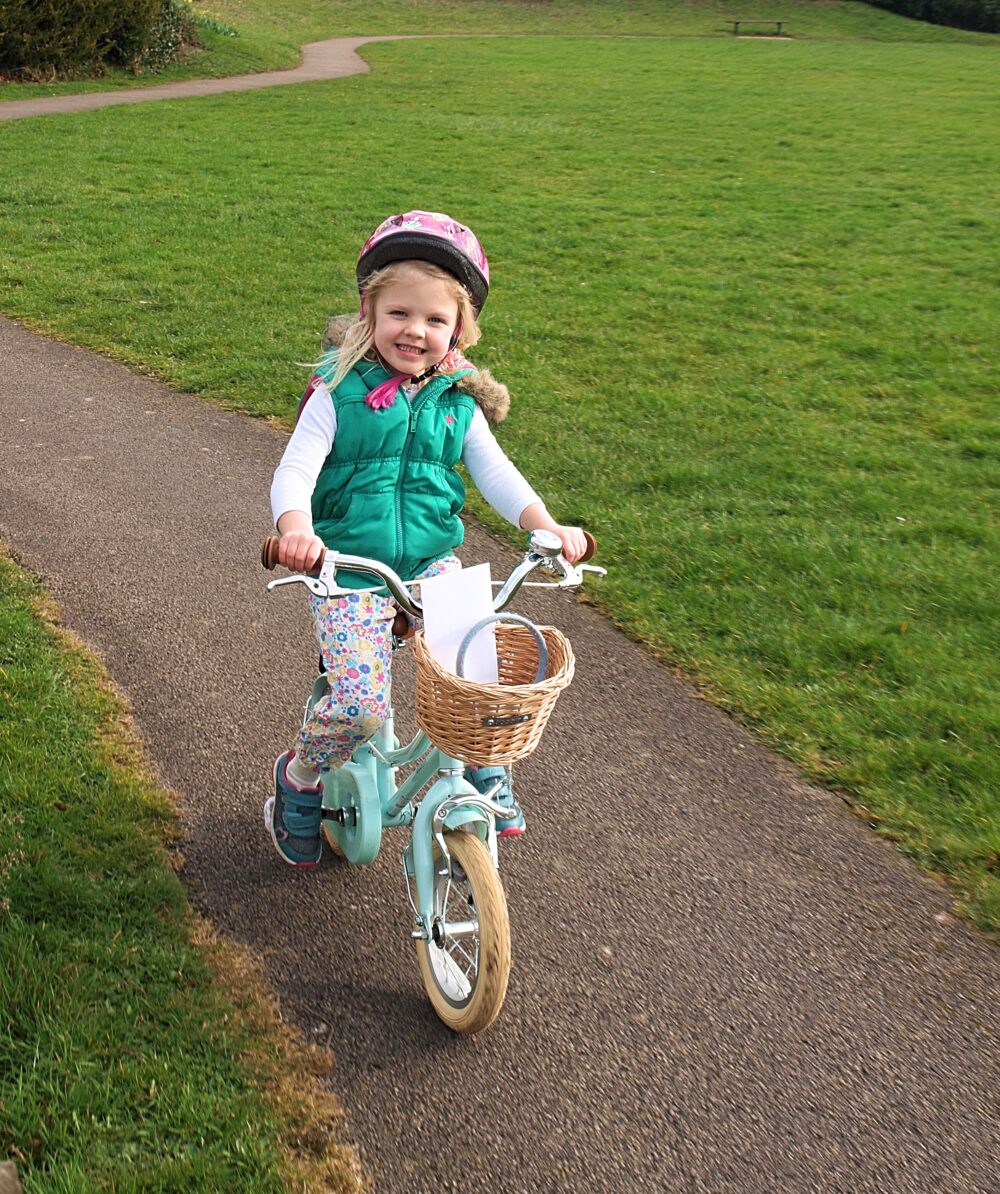
This is the age you need to start getting yourself familiar with the general rules around what makes a decent kids bike. If you buy a heavy hulk of metal that they can’t pick up or control, you won’t be helping them develop a love of cycling (and your hard earned cash could be put to better use).
Here’s a few other articles to help if your child is in this age bracket:
- The best starter bikes – 14″ wheel kids bikes
- The best 16″ wheel starter bikes for ages 4 to 6 years
- The best 18″ wheel kids bikes for a 5 year old
20″ wheels and over – the choices start
Once your child gets onto a 20″ wheel bike, the choices start to increase. However, our advice is still to keep things simple, unless your child is ready to specialise. The best bike for most children while they are still developing their skills in the flat handle bar hybrid bike.
Hybrid kids bikes – the best all round choice
A hybrid bike will give you the best all-round bike. They can be ridden on road, grass, gravel and on lumpy/muddy/rocky trails. They’re a brilliant all round bike for kids who want to ride everywhere, and mean you don’t have to buy multiple bikes for different terrains.
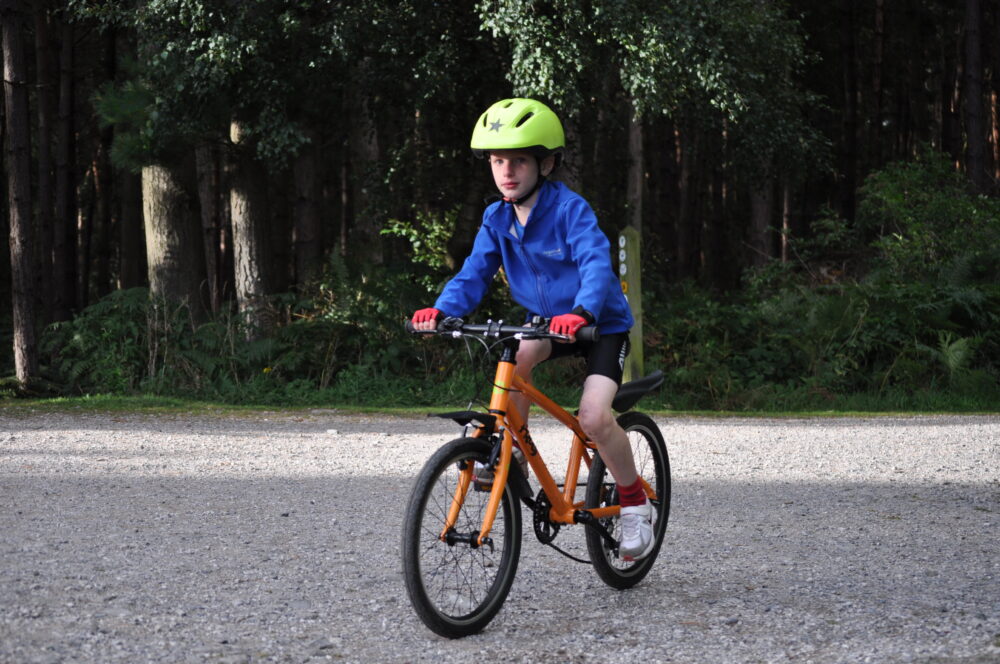
Hybrid bikes have flat handlebars, gears and good all round tyres to cope with most terrains (you can swap out tyres if needed for smoother road style tyres or knobbly off road tyres if necessary).
As children move onto using gears we recommend keeping the gearing as simple as possible to avoid confusion. This means having a single chainwheel at the front, so they only have to worry about changing the rear gears.
The previous general rules continue to apply about weight, build quality and the child friendliness of components.
Unless your child is specialising in a particular type of cycling, then we strongly recommend you buy them a hybrid bike – they can take part in most activities on them, as this photo of the line up at a Go-Ride race shows:
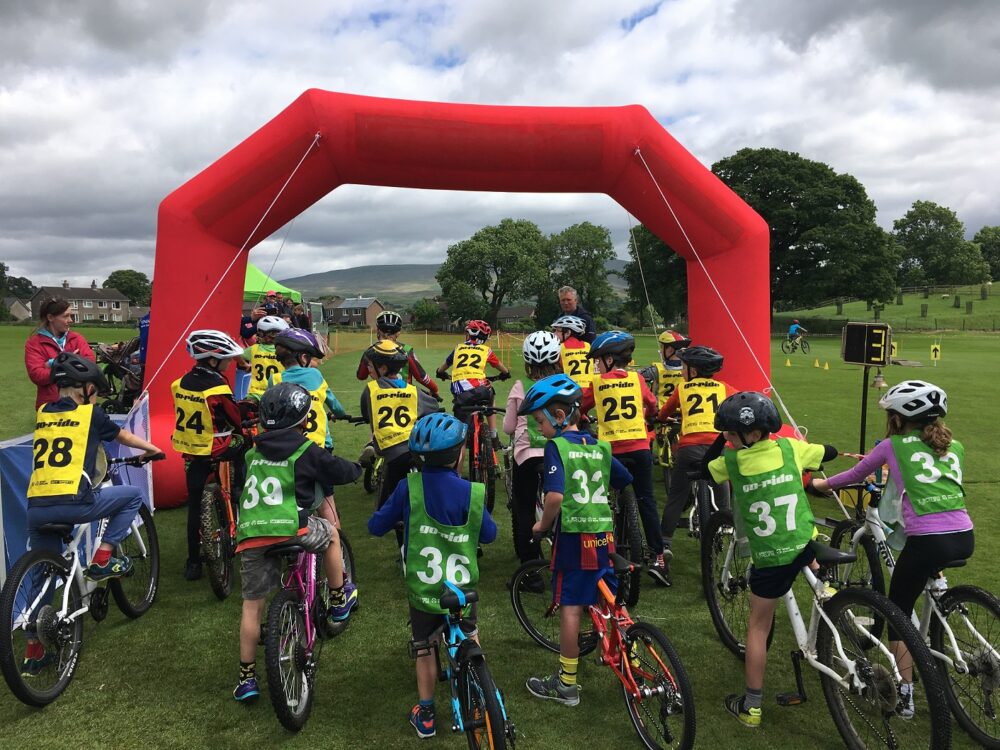
Other posts that will help you find the best hybrid bike for your child are:
- 20″ wheel hybrid bikes for kids aged 6 to 8
- The best 24″ wheel all purpose kids bikes for ages 7 to 10 years
- Best 26″ wheel kids bikes for ages 9 – 13 years
Kids mountain bikes
Mountain bikes are designed for off-road cycling and have the ability to travel over a variety of surfaces that may be steep, rocky or consist of loose material. However, that is not to say that they cannot be used for riding on the road, just that there are better options if dedicated road riding is the intention, as it’s hard work pedalling such thick tyres on tarmac.
Mountain bikes have wide tyres to allow your child to get off road and have great fun developing their skills, either at a trail centre or on bridleways and other off road cycle routes.
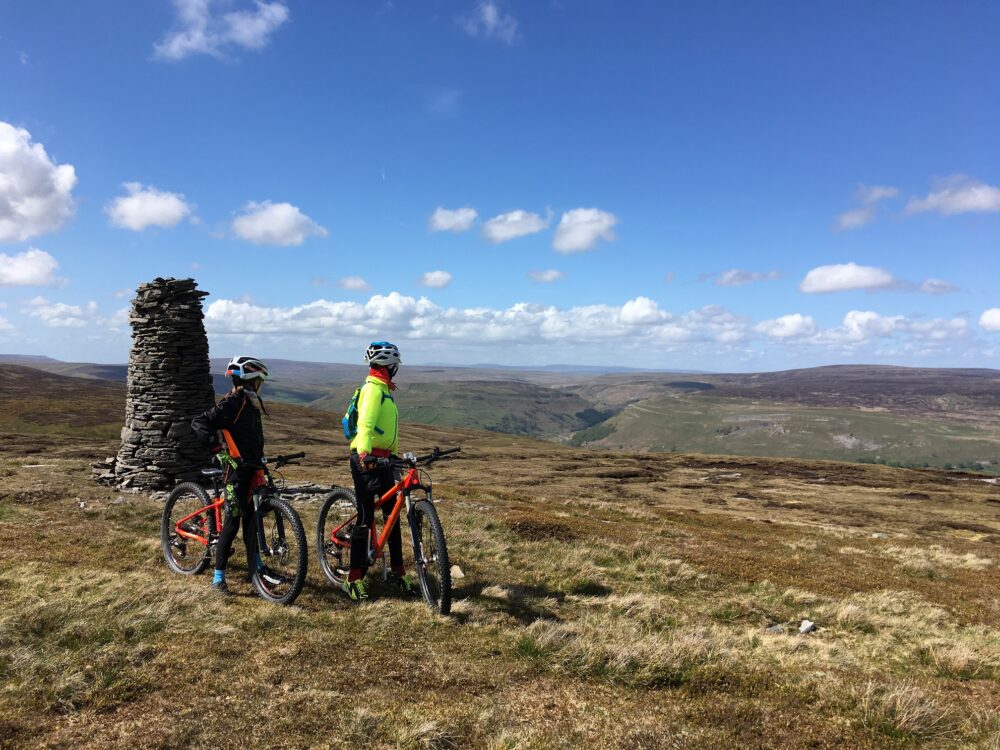
Gearing is very important on a mountain bike as your child is going to have to climb steep sections to have the fun of coming back down again. Keeping it simple with a single chainring at the front helps to avoid confusion, although there are options with double or triple chainrings available that can give a greater range.
A high number of junior mountain bikes come with suspension forks at the front and are known as hardtail bikes. However, some kids mountain bikes with rear suspension (all known as full suspension) are now hitting the market, although you’ll be paying a premium for these top of the range bikes.
However suspension isn’t always needed on a kids mountain bike, and we recommend going for a better quality mountain bike with rigid forks than for a cheaper bike with a suspension fork that isn’t designed for children. For more information about suspension and other things to consider before buying a mountain bike for your child see our article Buying a kids mountain bike – things you need to know.
If your child is riding blue routes at a trail centre, then a good quality hybrid with knobbly mtb tyres will suffice (and if they go up to red trails they will develop fabulous riding skills if they do it on a hybrid).
If a mountain bike is the best choice for your child, then please check out our other posts:
- The best kids 20″ wheel mountain bikes
- The best kids 24″ wheel mountain bikes
- The best kids 26″ wheel mountain bikes
- How we became a mountain biking family in just one year
- Cheap but quality 26″ and 27.5″ kids mtb’s for around £400
- Best mountain bikes for teenagers
If your child is into dirt jumping or downhill mountain biking (i.e. black / orange routes and harder) then you’ll be looking for a specific bike built for this purpose (and paying accordingly).
Kids BMX bikes
BMX bikes grew up in USA during the late 1970’s, before bursting onto the UK scene in the early 1980’s and starring in blockbuster films such as ET. Built around a small frame, 16″ to 20″ wheels and single speed, BMX bikes are designed either for racing or freestyle, where riders perform tricks.
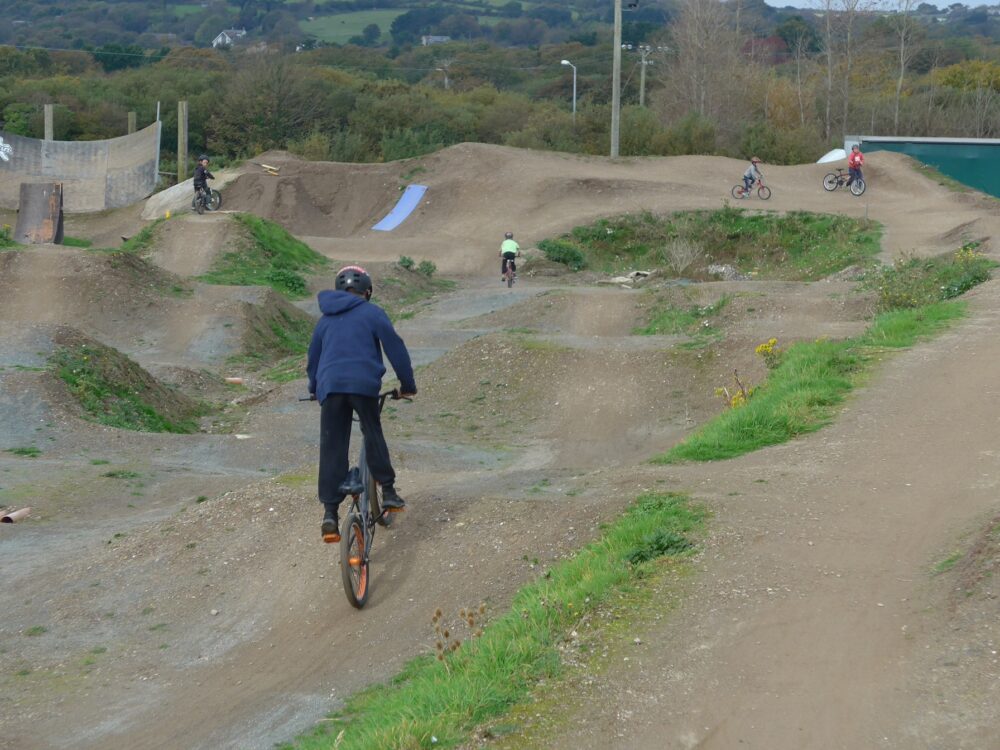
BMX’s can be great fun for kids, but as with the other choices, think about whether you’re limiting the type of cycling your child can do.
There’s a good selection of kids BMX bikes available to choose from at a range of prices.
However, remember that it’s more than possible to do tricks on a hybrid or mountain bike, but you’re going to struggle to ride distances on road or do off road trails on a BMX. You can find out how we got on when we took the Cycle Sprog to a bike park in this article:
Drop handlebar bikes for kids
As the name suggests, drop handlebar bikes don’t have the flat handlebars that kids bike traditionally come with – they have drop handlebars! This creates a whole new set of challenges for a child – they must have the confidence to lean forwards and ride on the drops, and the ability to brake and change gear in that position.
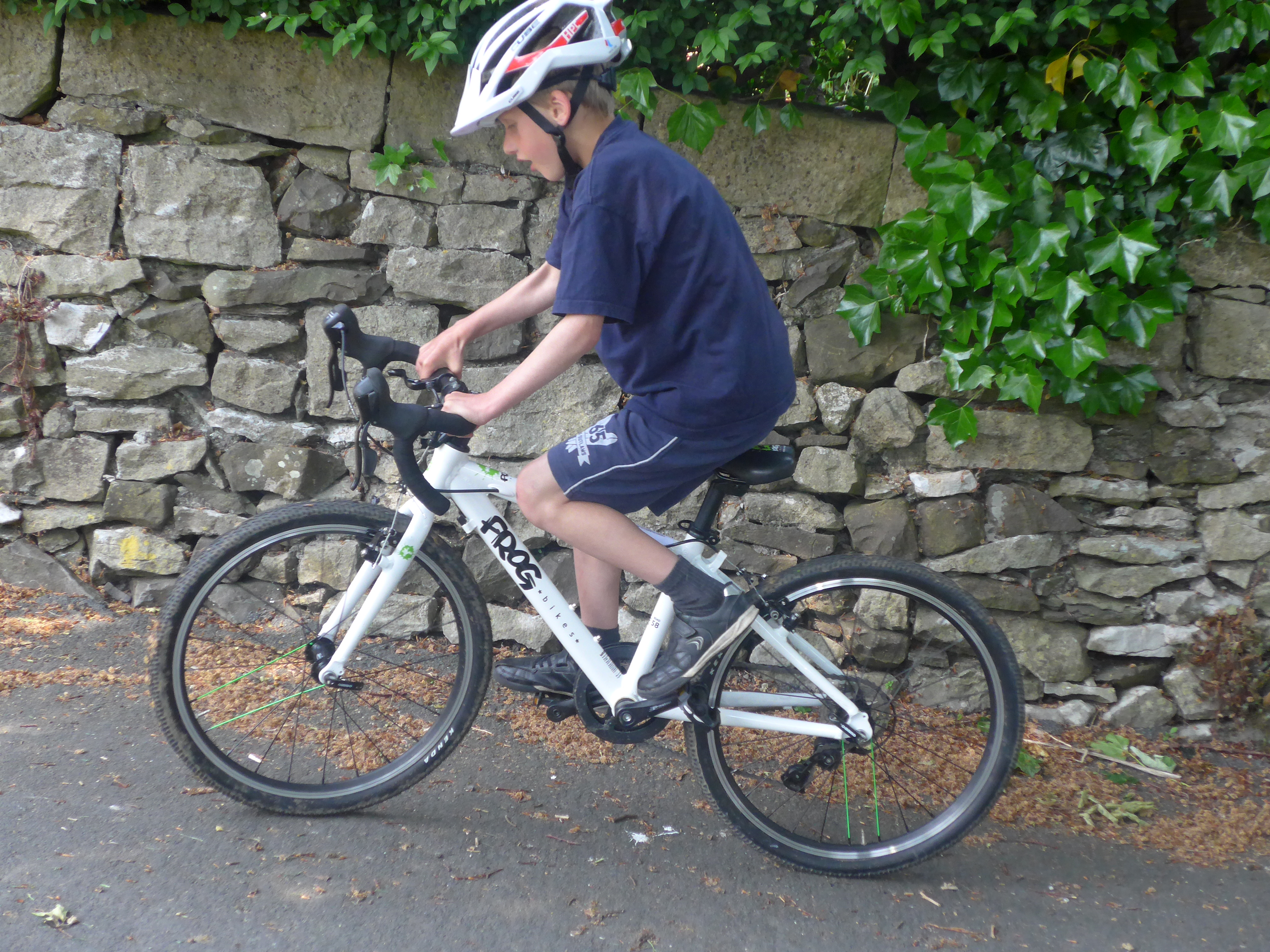
Unless your child is already a proficient cyclist, we would recommend they gain their confidence on a hybrid or mountain bike, and move to drop handlebars when they’re confident at cornering, changing gear, braking and riding at speed.
Once your child is ready for drops, then you need to decide whether they want to ride purely on road, or whether they’ll be riding cyclo-cross off road. There are a number of bikes that can be used for both purposes, with tyres that can be interchanged between thin road and thicker cross tyres, or you can go for a specific road only bike.
You can see in the photo of Cycle Sprog T riding uphill, he was very nervous on the 20″ wheel drop handlebar bike to begin with, even though it was fitted with the wider tyres. By the time he moved up to the 24″ wheel bike, he was ready to move onto the skinny road tyres and was able to ride for miles!
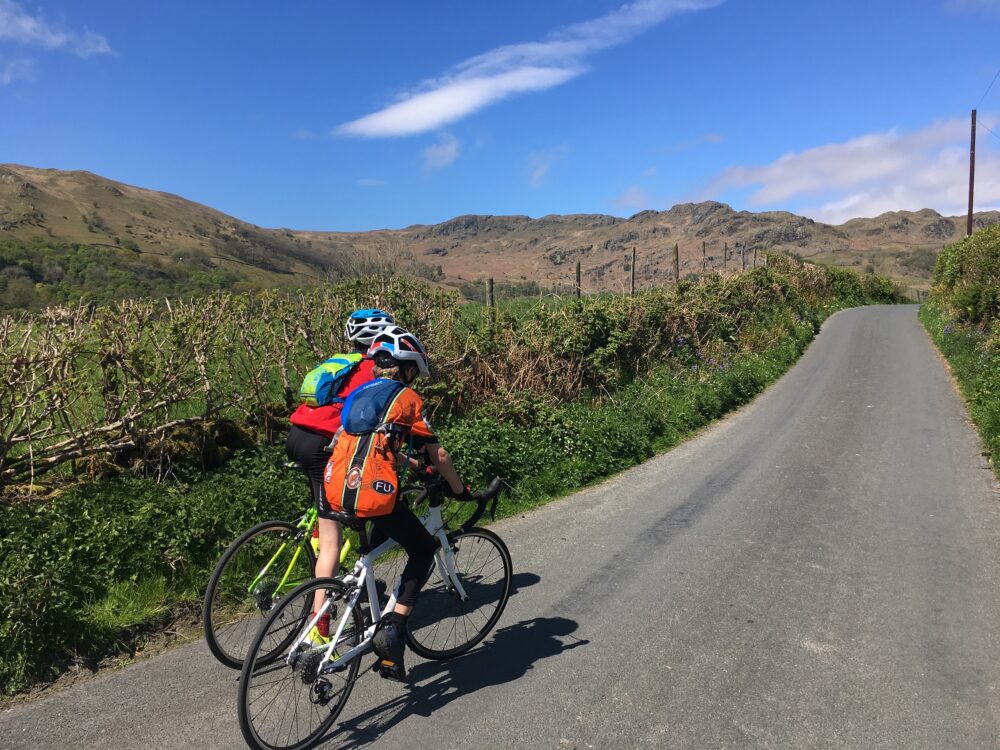
Kids drop handlebar road bikes
It takes skill and confidence to use the drop handlebars, and get used to changing gear and braking safely in that position. The narrow tyres make the ride a lot more “twitchy”, which means your child needs to be a skilled and confident cyclist to cope with this type of bike.
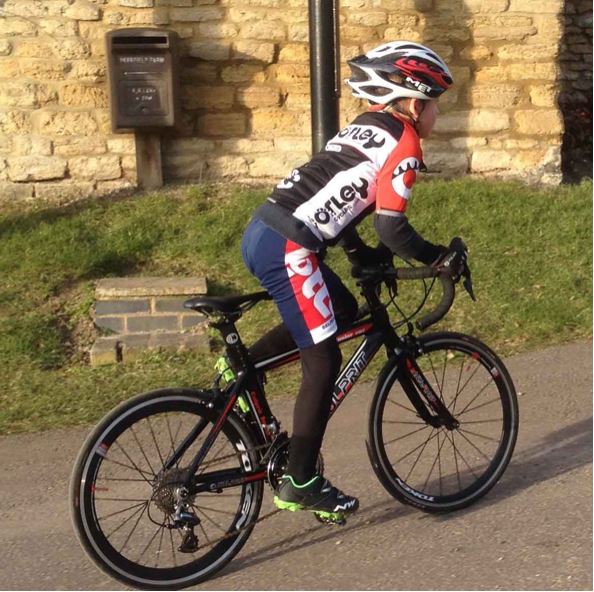
Road bikes are designed to be ridden on roads and smooth surfaces, so if you think your child is going to want to give off road riding a try, then buying them a road bike will limit their options.
However, if your child is a proficient cyclist then a road bike is a great investment – they’ll get faster and more confident in the saddle, particularly if they’re racing and riding regularly. We’ve written the following articles to help you find the best road bike:
- Road bikes – the Cycle Sprog guide
- The best kids road racing bikes with 20″ wheels
- The best road racing bikes for kids – 24″ wheels
Junior cyclocross bikes
Cyclocross is an autumn and winter cycle sport that involves riding your bike over mixed terrain that may include woods, hills, pavement, trails and grass. Riders may need to dismount and carry their bike over difficult parts, and older kids may have obstacles – a normal feature of this type of race.
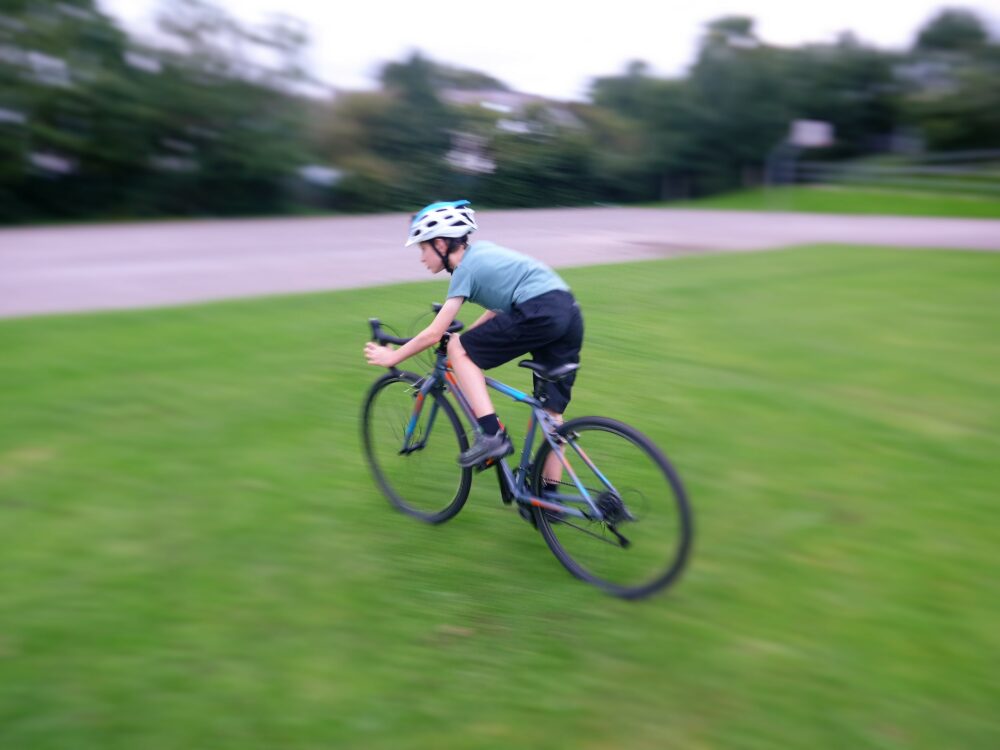
At first glance a Cyclocross bike looks very similar to a road racing bike with it’s drop handlebars, but even though there are some similarities they are designed and intended for a different purpose. Clearances between the wheels and frame are greater, the tyres are wider and have better grip to cope with the grass and mud, plus the brakes will be cantilever, again to cope with mud.
A number of kids drop handlebar bikes can be fitted with both cross tyres and smoother tyres for road riding, meaning keen young cyclists can get maximum use out of this type of bike. Do check the clearances on the brakes and frame if you’re planning on doing this, as not all road bikes will accept wider tyres.
If your child is interested in cyclo-cross then these posts will be of use – you’ll see that they don’t actually need a cross specific bike until they’re serious about the sport.
- Kids cyclocross bikes – the Cycle Sprog guide
- Riding in an U8 cyclo-cross league race
- Cyclo-cross for kids – let the mud fly!
Kids Track Bikes
These are a very specialist type of bike, designed for children who are riding at a velodrome or on a hard or grass track.
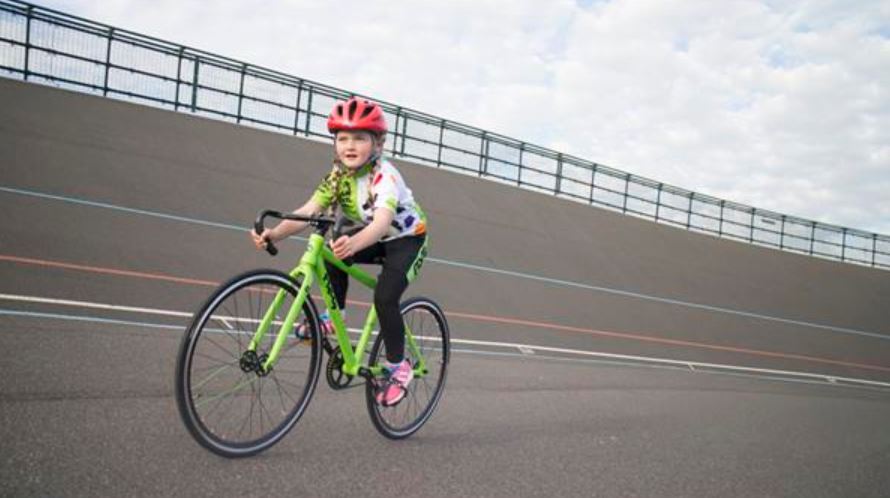
For those kids who like to ride round and round – you’ll need to seek out a specialist retailer for these. Frog and Dolan do kids sized track bikes.
Buying the best bike for my child – next steps:
If you’re looking to buy a new bike, then check out these posts:
- 12 things you need to know before buying a kids bike
- Find the perfect bike for your child
- The best place to buy a kids bike
A good alternative to buying a new bike is to lease a bike on a monthly basis and swap it for the next size up when your child grows.
Alternatively you can buy second hand – this can be a good way to get a better bike for your money. Here’s a few posts to get you on your way:
- Buying a second hand kids bike
- The best places to buy a second hand kids bike
- Buying a used kids bike – a dad’s tale
Hopefully this ‘buying the best bike for my child’ article has helped provide you with clear information on the different types available and what may suit your child best.
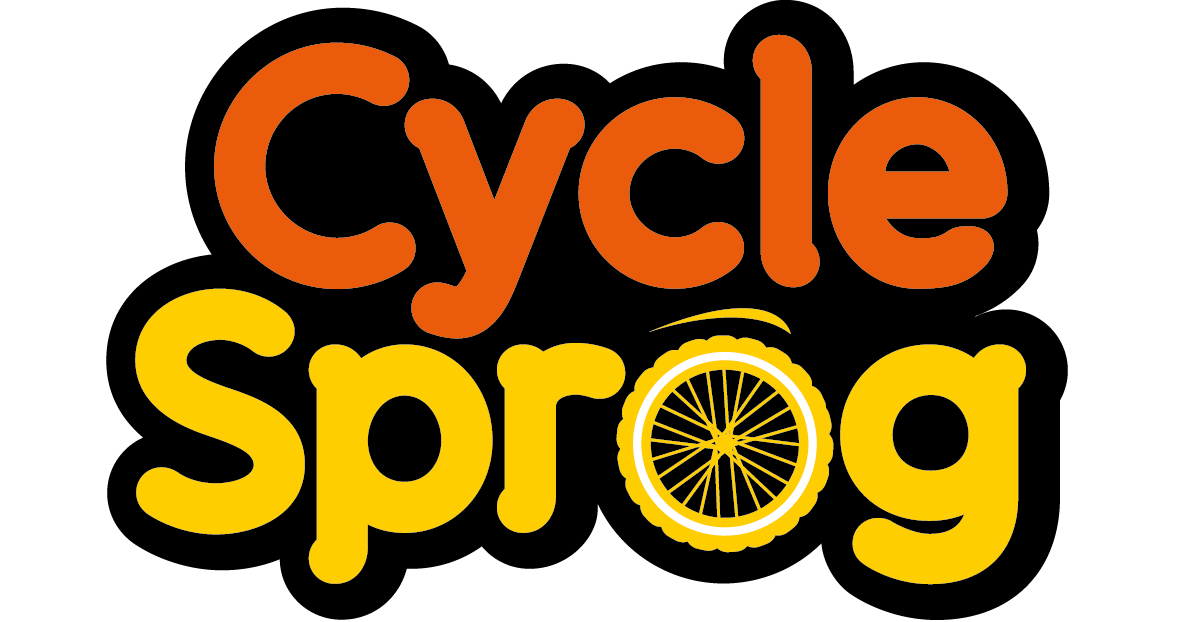
Comments